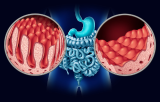Key Features of Gastrointestinal Disease Primary Cells
-
Disease-Specific Traits: Reflect the unique molecular and cellular features of various gastrointestinal disorders, such as IBD and colorectal cancer.
-
Cell Type Diversity: Include epithelial cells, fibroblasts, smooth muscle cells, and immune cells, all crucial for studying GI functions and disease mechanisms.
-
Physiological Relevance: Maintain the gene expression and cellular behavior of their tissue of origin, offering more accurate data than immortalized cell lines.
-
Wide Applications: Used for disease modeling, drug screening, microbiome studies, and evaluating regenerative medicine approaches.
Applications in Gastrointestinal Research
-
Disease Modeling: Primary GI cells are ideal for studying disease processes such as inflammation, cancer development, and tissue regeneration.
-
Drug Discovery and Screening: Essential for assessing the efficacy and safety of new drugs targeting GI diseases.
-
Microbiome Interactions: Help explore how the gut microbiota influences diseases like IBD and colorectal cancer.
-
Regenerative Medicine: Offer platforms for developing cell-based therapies for GI tissue repair and regeneration.
Advantages of Using Primary Cells in Gastrointestinal Disease Research
-
High Physiological Relevance: Primary GI cells provide a more accurate representation of in vivo conditions compared to immortalized cell lines.
-
Personalized Medicine: Enable research that reflects individual patient responses, paving the way for precision treatments.
-
Advanced Research Applications: Integrate with cutting-edge technologies such as organoids and 3D cultures for enhanced disease modeling.


